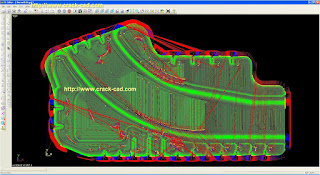Sophisticated NC programmers appreciate the importance of a complete, integrated CAD/CAM environment to handle the toughest manufacturing jobs. Regardless of the application, these ELITE users often find the need to modify, edit & create additional geometry to support the creation of toolpath. compatible with Windows XP, XP64, VISTA, and Windows 7 X64 Professional, CAM-TOOL provides Mold & Die manufactures a wide range of modeling capabilities not found in “high end” programming systems. Once your data’s prepared, the calculation of NC toolpath is completed by simply defining your machining strategy & cutting tools. CAM-TOOL does the rest by always making sure the tool only goes where necessary to remove material using our powerful optimization capabilities. Graphic Products Inc. has a proven track record in data conversion. With over 20 years of technical expertise in the software industry, CAM-TOOL’s data translators provide robust, accurate and reliable data conversion. Conversion capabilities include translators able to handle most data types including but not limited to: Input and Output formats for IGES (JAMA-IS compatible), DXF, CAM-TOOL.C3. Optional direct translator support is provided for CATIA and UNIGRAPHICS. Standard output from CAM-TOOL Base Module is RPS (STL and RPF are optional). [Main Functions] Input/ Output formats in CAM-TOOL: IGES (JAMA-IS compatible) DXF CAM-TOOL.C3 Direct Translator support for: CATIA* UNIGRAPHICS* (Parasolids) Output Formats from CAM-TOOL: RPS (Standard) STL* RPF* *Optional Items: RPS is Standard in the Base Module. SHAPE DIAGNOSIS – Geometry Evaluation – Geometry Evaluation and editing functions are integrated into the modeling function for use in die/mold design. This powerful tool is used to create die/mold surfaces from product models and also provides valuable information about the model such as Radius and Draft Angle. In the past, the process of developing mold models from product models was a time consuming process. When developing CAM-TOOL, attention was focused on this previously inefficient area in order to develop a more practical geometry evaluation function. A variety of advanced capabilities were created including such functions as cavity/core split, undercut, draft angle and volume surface area calculation. These functions relieve the designer/operator from tedious, demanding and intricate work. Display of Fillet Radius Data of Specified Surfaces Fillet Radius extraction using specified surfaces and single-operation processing. Accurate shape control by cross-section line extraction. Display of Draft Angle Data at Specified Surfaces Extraction of surfaces on vertical walls in one operation. Surfaces for which the tilt is smaller than the specified draft angle, can be extracted in one operation. Since the system selects the necessary surfaces directly, the designer/operator can switch to editing operations immediately. [Main Functions]
Automatic extraction of non-frontal surfaces. Cavity/core split. Undercut – Yes / No Draft Angle data. Volume and surface area calculation. Maximum co-ordinate (boundary) values for surfaces. Extraction of surfaces on vertical walls. Extraction of cross-section. MODELING – Die/mold Surface Design – CAM-TOOL‘s modeling functions are designed specifically for the demands of die/mold surface design. The array of fillet and surfacing functions are easy to use and master. Consequently, the sophisticated modeling required for the direct cutting of cavities can be accomplished more efficiently.
 Software training,tutorials,download,torrent
Software training,tutorials,download,torrent